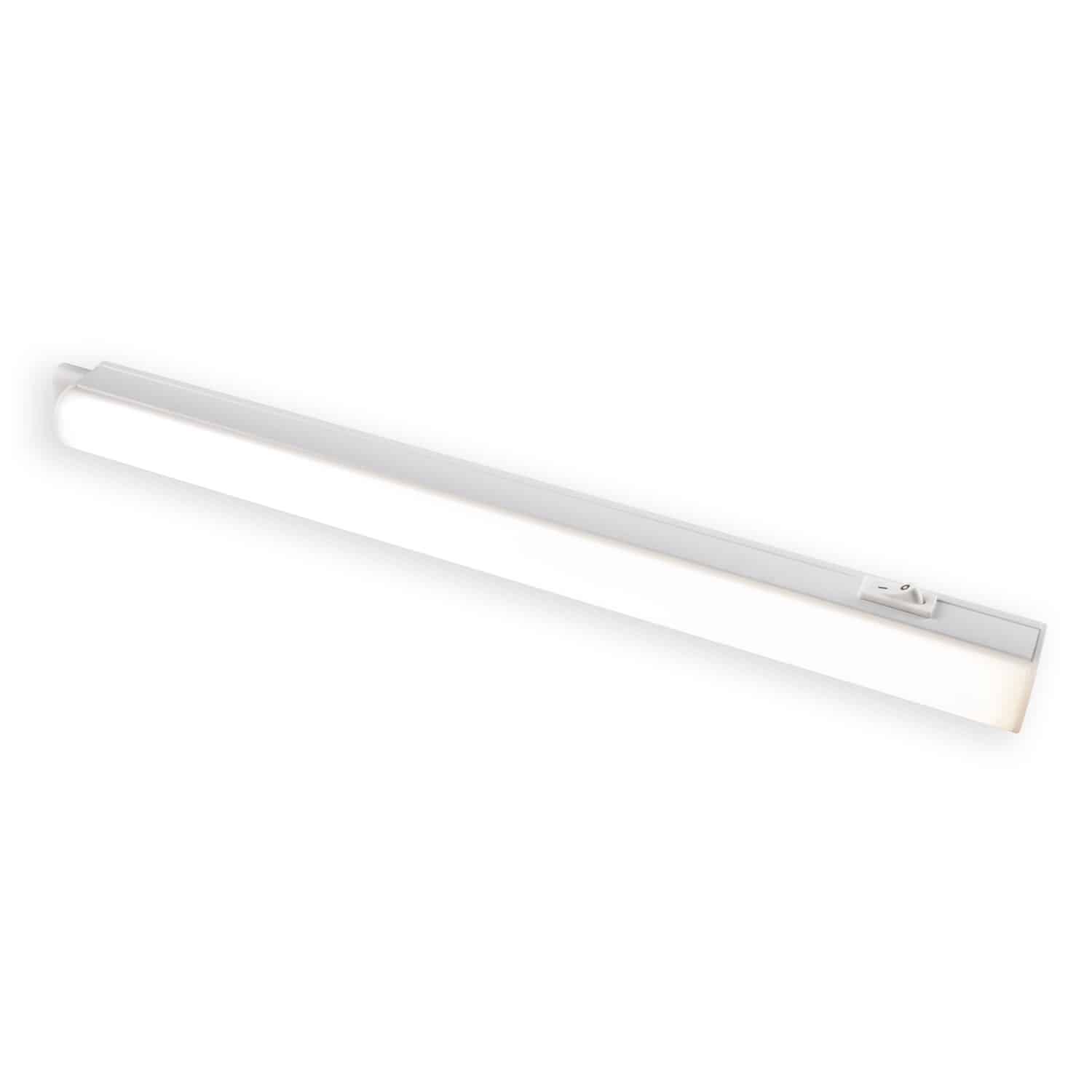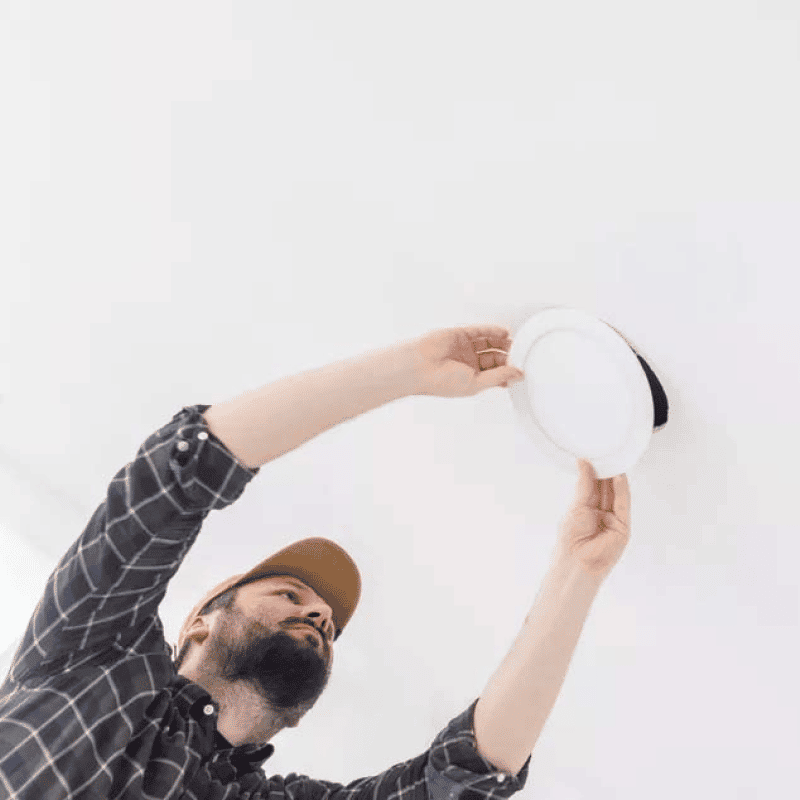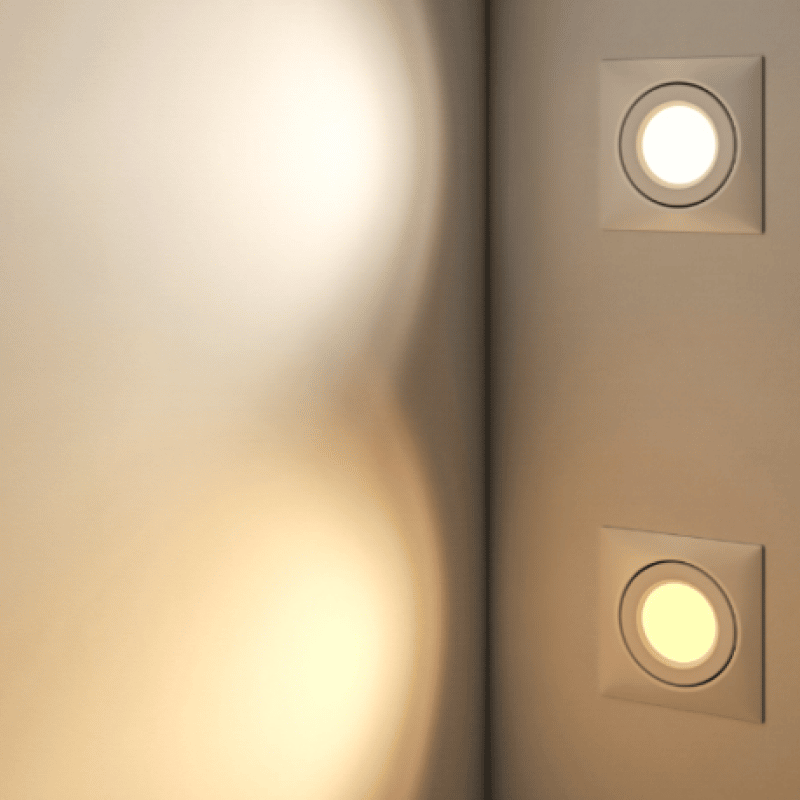How Many Recessed Lights Should I Have for My Room?
When installing recessed lighting, it’s not always clear exactly how many lights you need to install to fit your aesthetic and lighting needs. We’re here with a handy guide that will tell you exactly how many lights you need to achieve your desired look.
What Is General Lighting?
When you hear someone refer to general lighting, they’re talking about the overall illumination of a room. Another frequently used term for this is ambient lighting. While sunshine and windows may provide plenty of lighting during the day, you need a general lighting plan to keep your nights from being pitch black.
That’s where recessed lighting comes in. Recessed lighting, combined with dimmers, allows you to control a room’s illumination at all times. The light shines downward from the recessed lights in the shape of a cone. To make sure the light is evenly distributed throughout the room, there are many things you need to consider, such as the size of the room, the height of the ceiling, and the room’s purpose. For instance, you’ll likely want more lighting in a bathroom or kitchen, but less in a living room meant for entertaining and relaxing.
How to Measure a Room for Recessed Lighting
If you want to figure out how to measure a room for recessed lighting, the first thing you need is a good floor plan. Using this to define your space and lighting needs is ideal. Of course, it would help if you also had all of the measurements for each room on hand. There are online calculators you can use that are pretty user-friendly. Just input your measurements and choose the kind of lighting plan you want. It’s simpler than you might think!
How Many Recessed Lights Should I Have for My Ceiling?
The number of recessed lights you install depends on how high your ceilings are. Taller ceilings and lower ceilings usually require the same amount of lights, although you probably need stronger bulbs the higher the ceiling is.
Follow the Ceiling Height Rule of Thumb
LightUp proposes the following rule of thumb: divide the height of the ceiling by two. So, for example, if you have an 8-foot ceiling, place the lights four feet apart, and so on. This should be a baseline, although this depends on the strength of the bulbs being used and the room’s general purpose.
How to Lay Out Recessed Lighting
According to HomeDepot, before installing your recessed lighting, you need to do three things:
- Determine your goals: what are you using the room for, and what kind of lighting do you want?
- Make a room plan: take measurements and make a layout.
- Figure out where the lights should be placed.
Determine Your Goals
What do you want to use the room for? Do you need general lighting? If so, you need bright, even lights. If accent lighting is required, bright, focal point-based lights will do the trick. If you want to feature a mantlepiece of painting prominently, you need a wall wash (bounce light from the ceiling off the wall). For areas such as showers or steam rooms (wet areas), you need to be more specialized with specific trims.
Draft a Room Plan for Your Lighting Needs
Make sure to measure your room and draft a plan for your recessed lighting layout. Your best bet is to use grid paper and note everything in the room, such as your shelves, workspaces, counters, and more.
Run Some Calculations for Lighting Placement
As mentioned earlier, the general run of them is the height of the ceiling divided by two. That should tell you how far apart your lights need to be. For more task-oriented areas, such as kitchens and bathrooms, you may need to be more creative with where the lights are aimed. You want to consider things like pools of light to make the lighting more efficient rather than overloading the room with lights.
FAQs
Should I Use 4″ or 6″ Recessed Lights?
According to this blog, the old myth that 4-inch recessed lights are not suitable for general lighting is just that – a myth. That common rule of thumb only really applied to old incandescent lighting standards. With modern LED lights, the minimum wattage you need for general lighting, 600 lumens, can be easily met or surpassed.
However, if you have higher than average ceilings or you happen to be lighting a large room, 6-inch lights are better from both a style and function point of view. Larger lights will look better proportioned in a large room, while the higher watts output and wide beam angle will make for more effective lighting.
How Far Apart Do You Space 6-Inch Recessed Lights?
Every manufacturer will provide a maximum spacing criterion for their lights. For example, for a 6-inch light, typically, the number is 1.5, which should be multiplied by the ceiling height. So, if your ceiling is 8 feet tall, multiplied by 1.5, the maximum space between each light should be 12 feet.
There’s plenty of information out there about how to layout recessed lighting in each room, with basements, kitchens, bathrooms, living rooms, and more needing different styles. BAZZ Smart Home has all the information you need, plus a wide variety of smart lighting fixtures to browse!
Our best sellers


BAZZ Integrated LED Complete Directional 4″ Recessed Light Fixture Matte Black Dimmable 4CCT Kelvin select 2700-3000-4000-5000K + switch


BAZZ 12 in. White and Chrome Linear LED Under Cabinet Light








